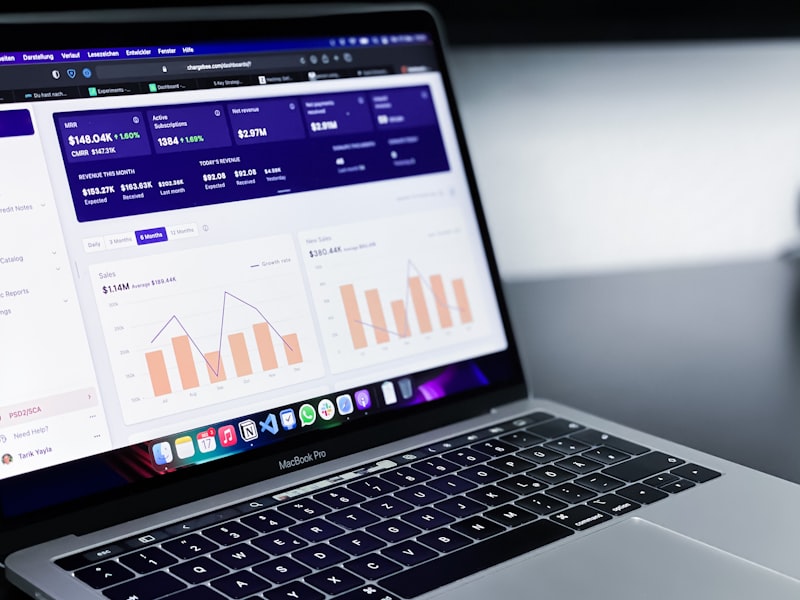Product-led growth (PLG) has become a popular framework for scaling SaaS companies. The key idea behind PLG is to use your product as the main driver of customer acquisition, retention, and expansion.
In this post, I'll walk through a simple 3 step process for setting up product-led growth within your company. While PLG requires significant effort to fully implement, following these initial steps will get you started on the right track.
Step 1: Identify Your Aha Moment
The first step in implementing PLG is identifying your product's "aha moment". This is the moment when a user first gets value from your product - their lightbulb goes off and they say "I get it!".
Finding this moment is crucial because it's the point where users go from skeptical to sold. Once they experience the value you provide, they're much more likely to convert to a paying customer and expand their usage over time.
To identify your aha moment:
Analyze user behavior data - Look at usage analytics to see where users have those early "breakthroughs" with your product. At which points do they show signs of engagement or value realization?
Interview users - Talk to customers, especially new ones, and ask how they first realized your product would be valuable. Look for common themes in their stories.
Define your minimum viable experience - What is the shortest path through your product to deliver initial value? This focused experience is often where the aha moment occurs.
For example, Dropbox's aha moment is users successfully syncing a file across devices for the first time. Slack's is sending your first message and getting a response back instantly. Identifying this moment crystallizes what makes your product unique and valuable.
Step 2: Build Your Aha Moment Into Onboarding
Once you've identified your aha moment, the next step is optimizing your user onboarding to deliver that experience upfront. You want new users to have their aha moment as quickly as possible when first using your product.
Some best practices here:
Prioritize simplicity - Onboarding should avoid distractions and guide users directly to the aha moment. Remove all unnecessary steps or clutter.
Consider progressive onboarding - You may want to deliver your aha moment in the first session, but spread out secondary features over future onboarding touchpoints.
Make it social - The aha moment often occurs when users collaborate with others. Make sure onboarding mimics real-world usage by connecting new users right away.
Monitor and optimize - Continuously measure where users fall out of onboarding flows and optimize to improve the experience. Surveys, user tests, and analytics are invaluable here.
For example, Slack onboards new users by immediately having them join a team and start chatting. This mimics real messaging and delivers their aha moment seamlessly.
Step 3: Expand Usage Through Feature Adoption
After users have their aha moment, the next step is encouraging adoption of your broader feature set. You want users to organically discover valuable use cases and form product habits.
This expands their usage while also increasing perceived value and sticky retention. Some tips:
Drive recurring value - Identical to the aha moment, identify "recurring aha moments" that users should experience daily/weekly/monthly. Guide users towards these behaviors.
Structure plans and pricing - Offer plans/pricing that incentivize increased usage. For example, charge per user (vs. per account) or offer volume discounts.
Nurture through education - Create in-product education and tips to teach advanced features. Time these prompts based on user lifecycle.
Leverage internal virality - Reciprocal user behaviors (like notifications) drive engagement. Structure features to maximize these viral loops.
Analyze usage data - Surface insights on feature adoption and statistically design optimizations to improve metrics.
For example, Slack sends weekly "Tips" emails to highlight lesser-known features to users. Dropbox sends in-product modals that prompt sharing files or folders with others.
This drives viral loops and expands usage.
In Summary
Transitioning to a PLG model takes considerable work, but following these three steps creates a solid foundation:
Identify your aha moment that delivers initial user value.
Optimize onboarding to fast-track users to their aha moment.
Expand usage by driving ongoing value, education, and virality.
Product-led growth is more than a buzzword - it's a framework for maximizing retention, engagement, and revenue by fully leveraging your product itself.
While achieving PLG requires evolving your broader business strategy, these three steps provide a simple starting point for initiating the transition. Once in place, companies can build on this foundation by executing the full PLG playbook over time.
The end goal is creating a customer-centric, user-driven growth engine fueled by your product experience. With initial wins driven by these steps, realizing that vision becomes much more attainable.
So in summary, identify your aha moment, nail your onboarding, expand usage, and you'll be on the path towards sustainable product-led growth.
FAQ
1. What exactly is product-led growth?
Product-led growth (PLG) is a business strategy where a company's product itself is the main driver of user acquisition, retention, and expansion. Rather than separate sales or marketing teams, the product's user experience guides users through signup, onboarding, and ongoing value creation.
The goal is to build self-service experiences that automatically drive growth by creating organic product evangelists. Slack, Dropbox, and Facebook exemplify successful PLG strategies.
2. How is PLG different from traditional sales-led growth?
Traditional sales-led growth relies on human sales and business development teams to manually convert and expand accounts. In contrast, PLG replaces manual efforts with automated, user-centric product experiences.
PLG products attract and convert new users through virality and word-of-mouth rather than sales outreach. User onboarding and education are in-product vs. consultant delivered. Expansion is driven by adoption of new features vs. cross-sells from an account executive.
3. When should you adopt a PLG model?
PLG works best for products with viral loops, low friction onboarding, and recurring value delivery. Typical PLG companies include mobile/web apps, developer tools, and horizontal business software.
PLG isn't suitable for high-touch services or complex products (e.g. enterprise software) that require human sales assistance. Companies shouldn't force PLG if their product doesn't naturally support it.
4. What are the main benefits of PLG?
Benefits include faster growth from viral acquisition, higher retention from user onboarding, and broader usage from in-product expansion. PLG products also gain user feedback earlier, enabling customer-driven development.
Additionally, PLG's highly scalable model results in lower customer acquisition costs and higher lifetime values. Lower churn and higher referral rates are typical as well.
5. What does identifying your "aha moment" mean?
The aha moment is when a new user first experiences the core value your product provides. It's their initial "lightbulb turning on" that your product does something useful they couldn't do before.
Identifying this moment helps you know when users perceive value. It's a leading indicator of conversion, retention, and growth. Optimizing for fast aha moments is key to PLG.
6. How do you build virality into your product?
Virality involves designing experiences where users naturally spread your product through referrals and sharing. Examples include in-app notifications when contacts join, share buttons after achievements, or 'send invites' features.
Making core actions social helps drive viral loops. For example, WhatsApp grows virally by making messaging intrinsically social. Identify your core interaction and make it easy to include others.
7. How should you structure pricing plans for PLG?
PLG pricing incentivizes increased product usage. Strategies include per-user pricing, volume discounts, "freemium" plans, and differential pricing for premium features.
The goal is pricing proportional to value created, while encouraging broader feature adoption. Packaging plans to align with aha moments and user lifecycles is optimal.
8. What metrics indicate PLG success?
Key PLG metrics include viral coefficient (invite-to-signup conversion rate), onboarding completion percentage, organic acquisition channels percentage, and net retention or expansion by tier.
Usage metrics by cohort over time are important. Look for increasing retention, engagement, and expansion the longer an average user stays with your product.
9. How can in-app education drive PLG?
In-product educational guides, tips, and training drive engagement by making users aware of new features and use cases over time.
Well-timed, personalized prompts and recommendations nurture users into more expanded, habitual usage based on where they are in the customer lifecycle.
Education also improves retention when users gain skills to realize more benefits. Driving adoption minimizes churn by increasing perceived utility.
10. What are other best practices for PLG products?
Other PLG best practices include progressive onboarding, robust analytics, usage-based workflows, responsiveness to user feedback, and continuous optimization of all experiences to remove friction.
Testing pricing changes, viral tweaks, version releases, and educational content is crucial to maximize core metric improvements. Adopting an experimentation culture fuels PLG evolution.






